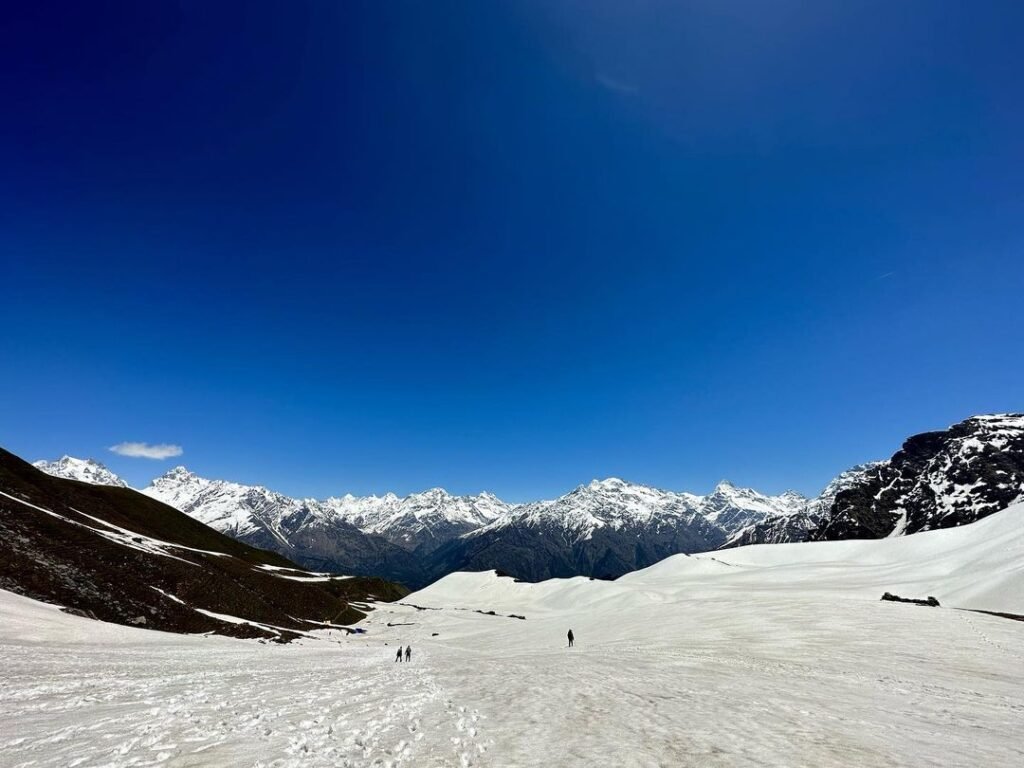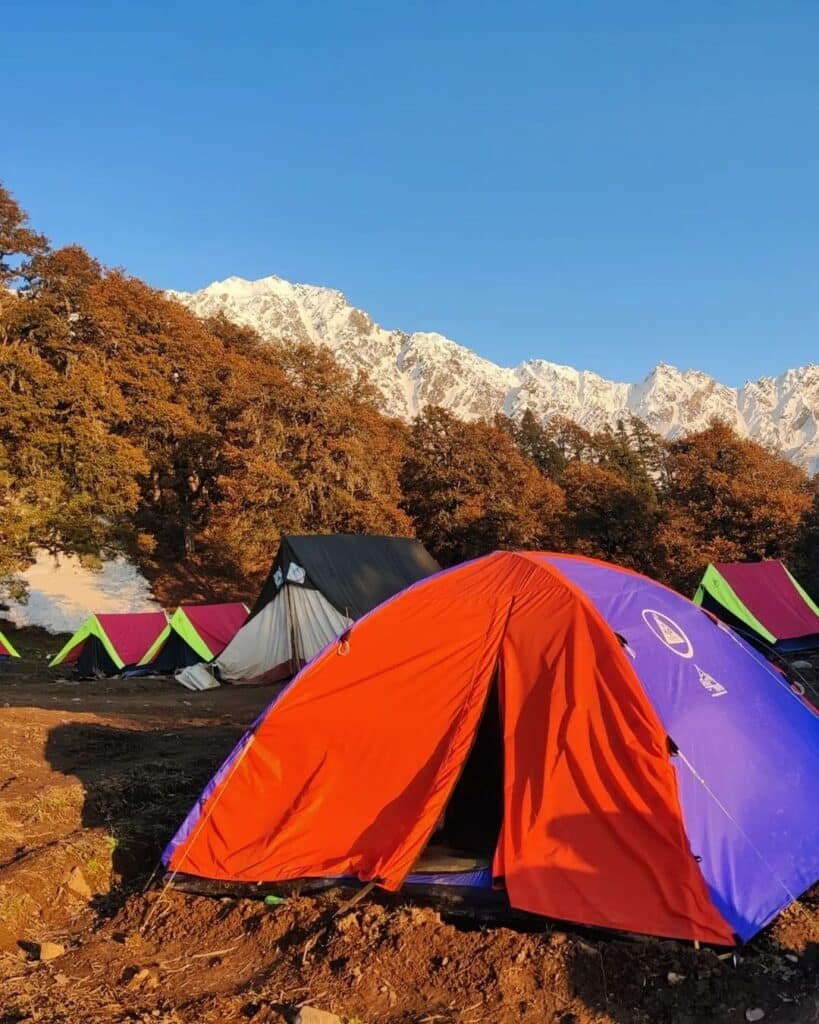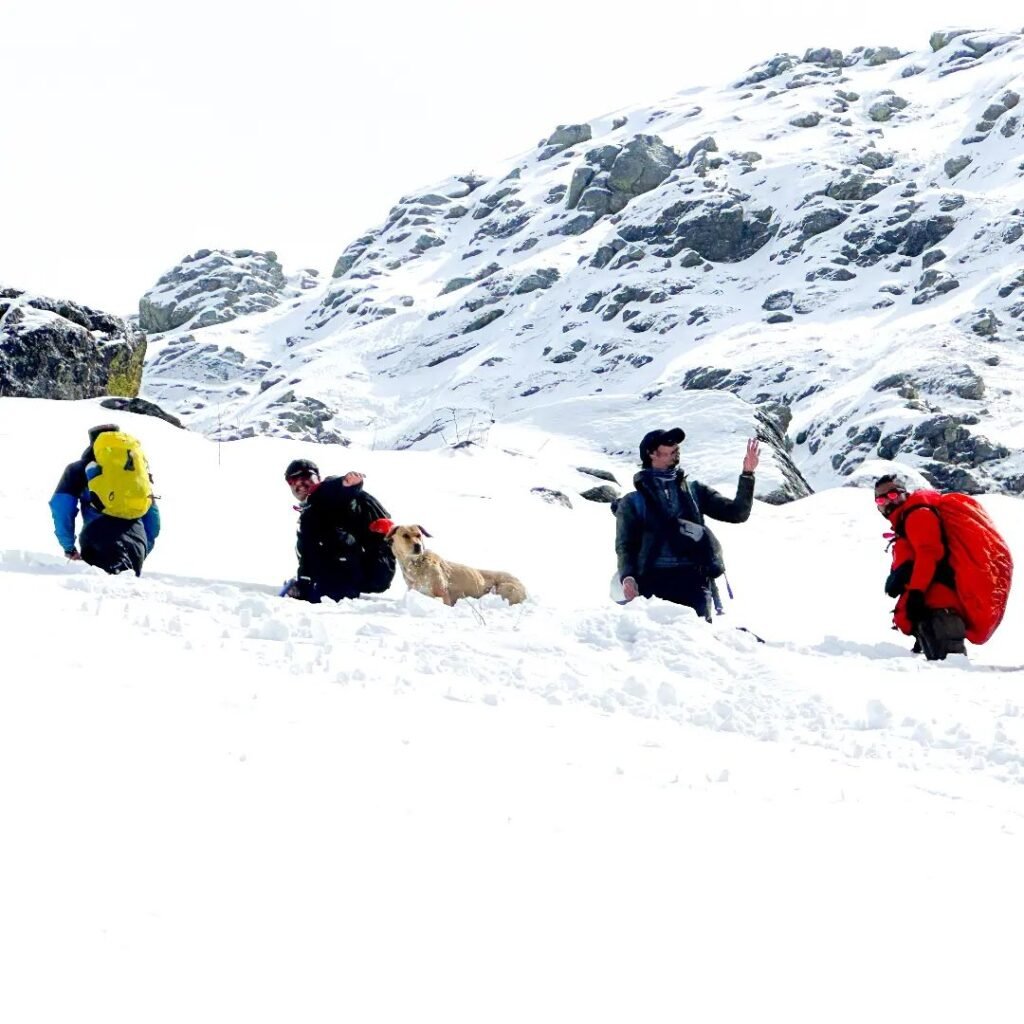Sar Pass Trek: A Complete Guide (Updated 2024)
- Trekking Destinations
-
Jun 09
- Share post
Are you seeking an exhilarating trekking experience amidst the breathtaking Himalayan landscapes? Look no further than the Sar Pass Trek.
This trek is a favourite among outdoor enthusiasts and nature lovers. It offers a perfect blend of natural beauty and adventure.
In this article, we will dive into the details of the trek, including the distance, best time to visit, difficulty level, essential gear, and a comprehensive itinerary to help you plan your unforgettable journey.
Table of Contents
ToggleOverview of Sar Pass Trek

The Sar Pass Trek is a popular Himalayan trek in the Parvati Valley of Himachal Pradesh, India. The distance of the trek is approximately 48 kilometres; this trek offers a thrilling and picturesque adventure for nature lovers and adventure enthusiasts.
The trek begins from the quaint village of Kasol, known for its scenic beauty and serene atmosphere. Trekkers from Kasol traverse through dense pine forests, crossing gushing streams and charming meadows. The trail gradually ascends, leading trekkers to higher altitudes.
One of the highlights of the trek is the crossing of the Sar Pass itself, situated at an altitude of about 4,220 meters. This challenging section requires traversing steep slopes and snow-covered terrain, offering trekkers a sense of accomplishment upon reaching the pass.
The journey also includes mesmerizing views of snow-capped Himalayan peaks, including Sar Pass, Tosh Glacier, and Parvati Valley. Trekkers are treated to breathtaking panoramic vistas throughout the trek, creating unforgettable memories.
Depending on the chosen itinerary, the trek usually takes 5-6 days to complete. Campsites along the route provide a tranquil setting for trekkers to rest, enjoy bonfires, and soak in the beauty of the surroundings.
With its stunning landscapes, thrilling challenges, and a glimpse into the local culture, the trek is a remarkable adventure that allows trekkers to immerse themselves in the natural beauty of the Himalayas.
- Max Altitude: 13,800 Ft.
- Average Trekking Fees: INR 7000 – INR 12,000 + GST (Per Person)
- Distance: 48 – 50 kms
- Difficulty: Moderate
- Duration: 5-6 days
- Ideal For: Experienced Trekkers
- Best Season: April – June
- Region: Himachal Pradesh
Additional Information of the Sar Pass Trek

Trek Distance
The Sar Pass Trek covers a total distance of approximately 48 kilometres (30 miles). It is usually completed over 5-6 days, depending on the pace and acclimatization of the trekkers. Each day’s distance varies, ranging from 6 to 12 kilometres (4 to 7.5 miles), offering a perfect balance of trekking challenges and exploration.
Best Time to Do Sar Pass Trek
The best time to embark on the trek is from May to June and September to October. During these months, the weather conditions are relatively stable, with clear skies and comfortable temperatures. The summer months of May and June provide pleasant trekking conditions with moderate temperatures, while September and October offer the enchanting beauty of autumn colours.
Difficulty Level
The trek is rated as a moderate trek in terms of difficulty. It presents a reasonable challenge to trekkers, requiring good physical fitness and stamina. The trail involves steep ascents and descents, traversing through snow patches and rocky terrains. Prior trekking experience is not mandatory, but it is recommended to have basic fitness and endurance training before attempting this trek.
Acclimatization and Fitness Preparation
Acclimatization is crucial while trekking in high-altitude regions to prevent altitude sickness. Before starting the trek, spending a day in Kasol or nearby villages is recommended to acclimatize to the elevation. Engaging in light activities and staying hydrated during this period will help your body adjust to the changing altitude.
Preparing physically for the trek is advisable by engaging in regular exercises such as jogging, cycling, or swimming. Building stamina through cardio workouts and leg-strengthening exercises will greatly enhance your trekking experience.
Costing & Budget for the Sar Pass Trek

When planning for the trek, it is important to consider the cost and budgeting aspects to ensure a smooth and enjoyable experience. Here are some key factors to keep in mind:
Trekking Packages: Various trekking agencies and tour operators offer packages for the trek. These packages typically include transportation, accommodation, meals, trekking permits, and a guide. The cost of these packages can vary depending on the inclusions, duration of the trek, and the operator’s reputation. It is advisable to compare prices and read reviews before choosing a package.
Average Trekking Fees Charged By Organisations: INR 7000 – INR 12000.
Travel Expenses: Apart from the trekking package, you must consider travel expenses to reach the base camp. Kasol is usually the starting point for the trek, and you may need to budget for transportation from your place of origin to Kasol. This can include bus or taxi fares.
Equipment and Gear: Ensure you have appropriate trekking gear, such as sturdy hiking boots, warm clothing, a backpack, a sleeping bag, trekking poles, and other essentials. If you don’t already own these items, factor in the cost of purchasing or renting them.
Food and Water: Most trekking packages include meals during the trek, but carrying some extra snacks and energy bars is a good idea. Additionally, budget for bottled water or water purification tablets to ensure a safe drinking supply.
Miscellaneous Expenses: It’s advisable to set aside a small amount for unexpected expenses or emergencies during the trek, such as additional meals, medical supplies, or extra days if the weather conditions pose challenges.
In conclusion, the total cost of the trek depends on various factors, including the trekking package, travel expenses, equipment, food, and miscellaneous expenses. Planning ahead, researching prices, and allocating a reasonable budget for a comfortable and memorable trekking experience are recommended.
How to Reach Kasol?

The starting point of the trek is typically in the village of Kasol, which is well-connected to major cities in India. Here are the common modes of transportation to reach Kasol:
By Air: The nearest airport to Kasol is Bhuntar Airport, approximately 31 kilometres away. Regular flights operate from major cities like Delhi and Chandigarh to Bhuntar. You can hire a taxi or take a bus from the airport to reach Kasol.
By Road: Kasol is well-connected and can be reached by bus or private taxi. Regular buses operate from Delhi, Chandigarh, and other major cities to Bhuntar or Manali. You can take a local bus or hire a taxi to reach Kasol. The road journey offers scenic views of the mountains and valleys.
By Train: The nearest railway station to Kasol is Joginder Nagar Railway Station, approximately 144 kilometres away. However, it is a narrow-gauge railway station, and not all trains connect directly to Joginder Nagar. An alternative option is to take a train to Chandigarh or Pathankot and then continue the journey by road via bus or taxi.
Once you reach Kasol, you can start the trek from there. Reaching Kasol a day before the trek is advisable to rest and acclimate to the altitude. You can find local transport options like shared cabs or hire a local guide to reach the exact starting point of the trek within Kasol.
Detailed Itinerary of Sar Pass Trek

Here is a day-by-day breakdown of the trek itinerary:
Day 1: Arrival in Kasol
- Arrive in Kasol, a picturesque village nestled in the Parvati Valley.
- Explore the local markets and immerse yourself in the serene surroundings.
- Attend a briefing session by the trek leaders and get acquainted with fellow trekkers.
Day 2: Trek from Kasol to Grahan Village
- Start from Kasol, crossing the Parvati River and ascending through dense forests.
- Reach Grahan Village, a quaint Himalayan village known for its traditional architecture.
- Camp overnight in Grahan Village, surrounded by towering mountains and starry skies.
Day 3: Trek from Grahan Village to Min Thach
- Begin the day’s trek, passing through scenic meadows and blooming rhododendron forests.
- Ascend towards Min Thach, enjoying panoramic views of the valley and snow-capped peaks.
- Set up camps at Min Thach, relishing the tranquillity of the pristine surroundings.
Day 4: Trek from Min Thach to Nagaru
- Embark on a steep ascent from Min Thach to Nagaru, reaching an altitude of approximately 3,700 meters (12,100 feet).
- Experience the thrill of crossing snow patches and witnessing the mesmerizing landscape unfold.
- Camp overnight at Nagaru, with the starlit sky above and the grandeur of the mountains surrounding you.
Day 5: Summit Day – Trek from Nagaru to Biskeri Thach via Sar Pass
- Start early for the challenging trek to Sar Pass, about 4,220 meters (13,845 feet).
- Traverse through snowfields and conquer the past, experiencing a sense of accomplishment and awe-inspiring views.
- Descend towards Biskeri Thach, where you will camp amidst picturesque meadows and stunning vistas.
Day 6: Trek from Biskeri Thach to Barshaini and Return to Kasol
- Descend from Biskeri Thach through thick forests and charming trails.
- Reach Barshaini, where the trek concludes.
- Board a vehicle from Barshaini to Kasol and celebrate the successful completion of your trek.
Please Note: This is a general itinerary, followed by most of the trekking groups in India. However, there might be slight differences in the itinerary depending on the trekking group you opt to go with.
Highlights of the Sar Pass Trek

The trek offers a multitude of breathtaking highlights that make it a must-visit destination for adventure enthusiasts. Here are some of the key highlights of the trek:
- Majestic Mountain Views: Trekkers are treated to awe-inspiring views of the mighty Himalayan peaks throughout the trek. The panoramic vistas of snow capped mountains, including Sar Pass, Tosh Glacier, and Parvati Valley, create a stunning backdrop and leave trekkers spellbound.
- Dense Pine Forests: The trek takes you through dense pine forests that exude a tranquil atmosphere. Walking amidst the towering pine trees provides a refreshing experience and a respite from bustling city life.
- Picturesque Campsites: The trek presents picturesque campsites nestled amidst nature’s bounty. These campsites, situated near gurgling streams and lush meadows, provide a perfect setting for trekkers to unwind, enjoy bonfires, and soak in the peaceful ambience of the surroundings.
- Challenging Pass Crossing: Crossing the Sar Pass is a trek highlight. With an elevation of around 4,220 meters, it offers a thrilling adventure as trekkers navigate steep slopes and snow-covered trails. The sense of achievement upon reaching the pass is unparalleled.
- Frozen Lake and Snowfields: During certain months, trekkers can witness a frozen lake and traverse snowfields along the trek. The pristine beauty of the frozen lake and the glistening white snowfields create a surreal experience, adding to the charm of the trek.
- Local Culture and Hospitality: Interacting with the friendly locals along the trek route provides a glimpse into the unique culture and lifestyle of the region. Trekkers can engage with the warm-hearted villagers, savour local cuisine, and learn about the traditions and customs of the area.
Overall, the Sar Pass Trek offers a perfect blend of natural beauty, adventure, and cultural experiences, making it a memorable journey for trekkers seeking to explore the enchanting landscapes of the Himalayas.
Safety Tips & Precautions
While embarking on any trek, safety should always be a top priority. Here are some essential safety tips to keep in mind during the Sar Pass Trek:
- Trek with an experienced guide and follow their instructions.
- Stay hydrated and carry an adequate supply of water.
- Pack light and carry only the essential items.
- Dress in layers to adapt to changing weather conditions.
- Respect the environment and maintain cleanliness.
- Inform someone about your trekking plans and expected return.
- Stay updated about weather conditions and local regulations.
- Avoid alcohol and smoking during the trek.
Unlock the Adventure: Subscribe Now for Exclusive Deals, Insider Tips, and Epic Trekking Guides Delivered to Your Inbox!
Essential Gear and Equipment for Sar Pass Trek
Before embarking on the trek, it is essential to pack the right gear and equipment to ensure a safe and comfortable journey. Here is a list of items you should consider carrying:
- Good quality Trekking shoes with good ankle support
- Backpack with rain cover
- Trekking gaiters
- Warm and waterproof clothing layers
- Sleeping bag suitable for sub-zero temperatures
- Trekking poles for better stability on uneven terrains
- UV-protected sunglasses and sunscreen
- Water bottles and water purification tablets
- Headlamp or flashlight with extra batteries
- First aid kit with essential medications
- Portable power bank for charging electronic devices
Conclusion
The Sar Pass Trek is a thrilling adventure that takes you through the pristine beauty of the Himalayas. With its easy to moderate difficulty level, mesmerizing landscapes, and the joy of conquering Sar Pass, this trek offers an experience of a lifetime. So, pack your bags, prepare yourself physically, and get ready to embark on this unforgettable journey in the lap of nature.
FAQs
The Sar Pass trek is moderately difficult and suitable for experienced trekkers due to steep ascents, rocky terrain, and changing weather conditions.
Sar Pass trek is in the Parvati Valley of Himachal Pradesh, India and the start point of the trek is Kasol.
The trek from Kasol to Sar Pass covers a distance of approximately 48 kilometres.
There can be snow on the Sar Pass trek in June, particularly at higher altitudes. It is advisable to be prepared for snowy conditions and carry appropriate gear.
Comments
Add a comment
Leave a Reply · Cancel reply
This site uses Akismet to reduce spam. Learn how your comment data is processed.
